Not many flowers begin with the letter Q, but most of them have the word queen in their name, suggesting some opulent blooms. To add a regal touch to your outdoor space, consider planting these eight queenly flowers that start with Q. Pour yourself a cup of tea, sit up tall and proud, and let’s get scrolling.
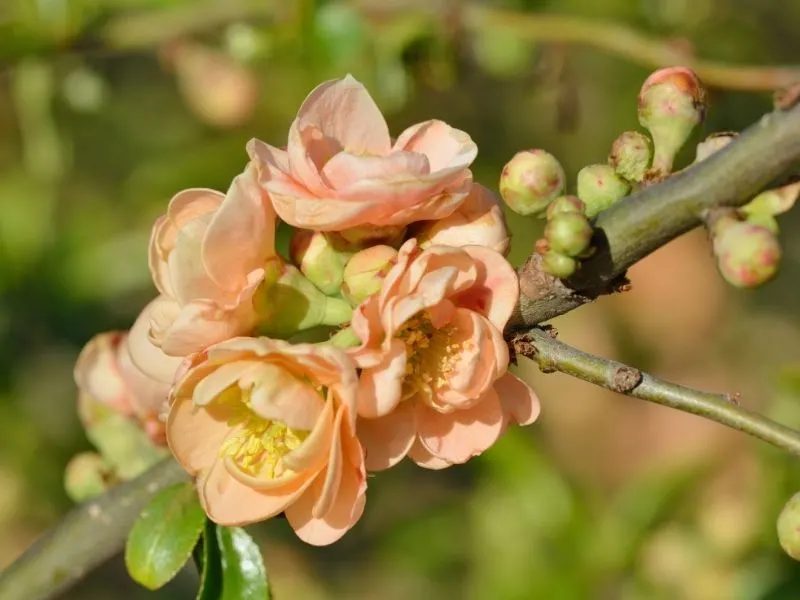
Annual Flowers that Start with Q
1. Queen Ann’s lace (Daucus carota)
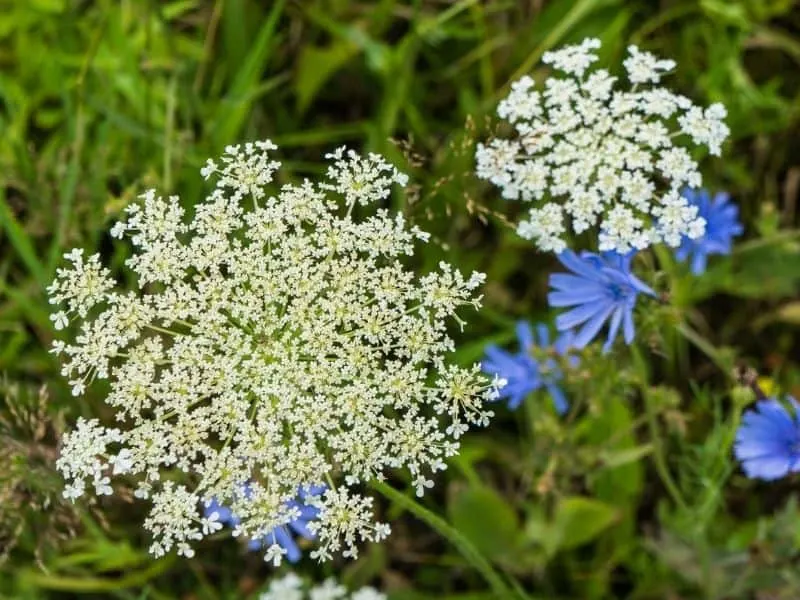
A common roadside flower in North America, Queen Ann’s lace actually comes from Europe and Asia. Its flat, lacy flower clusters and ferny foliage add elegance to any space.
Technically a biennial, Queen Ann’s lace aggressively reseeds after blooming in its second year of growth, unfortunately causing it to become invasive. Check with your local extension office before planting, and consider alternatives like water hemlock or orlaya.
Queen Ann’s lace thrives in well-draining soil and full sun. Cutting the flowers for arrangements or simply deadheading regularly will help control spreading.
Perennial Flowers that Start with Q
2. Quaker ladies (Houstonia caerulea)
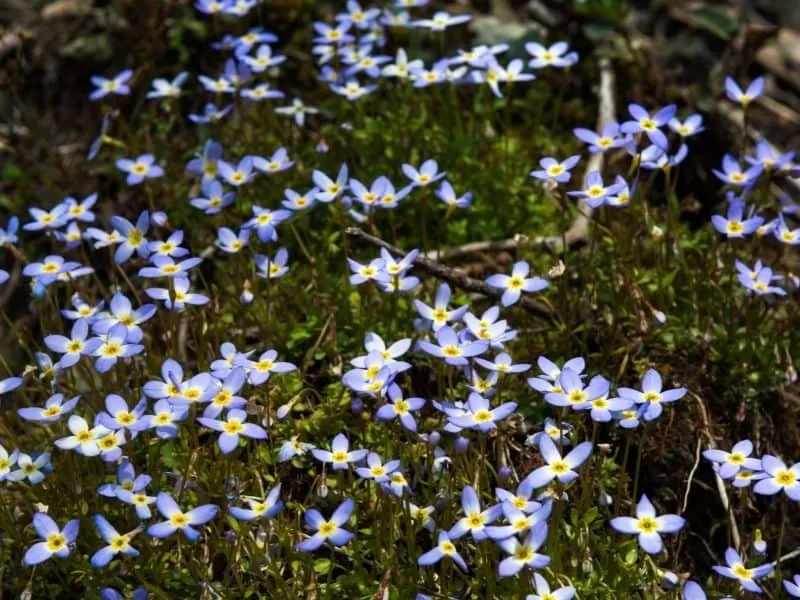
Also called azure bluet, Quaker ladies bloom in the late spring. Each tiny, delicate blossom has four pale-violet petals around a yellow center. This North American wildflower grows naturally in sandy areas such as prairies, savannas, and woodland paths, as well as sandstone ledges and glades and the damp, rocky edges of upland streams. They grow especially well in rock gardens.
Plant Quaker ladies in sandy or rocky, acidic soil with even to low moisture and full to part sun.
3. Queen of the meadow (Filipendula ulmaria)
Commonly called meadowsweet, queen of the meadow produces branched clusters of tiny white flowers throughout the summer. This native of Asia and Europe has unfortunately become invasive in many parts of North America, so check with your local extension office before planting, or consider a similar flower, like queen of the prairie (see below).
Queen of the meadow thrives in moist soil and full sun, seeming to prefer areas with fluctuating moisture, such as wetlands, moist meadows, and roadside ditches.
4. Queen of the prairie (Filipendula rubra)
Clouds of pink or white flowers hover over queen of the prairie’s attractive, deep-green foliage from mid- to late summer. This tall, sturdy North American wildflower tolerates wind as well as a range of soil conditions. It grows well in wildflower and pollinator gardens, back borders, and living fences.
Plant queen of the prairie in full to part sun and moist, well-draining soil, then forget about it: this low-maintenance flower tends to be happiest when left undisturbed!
5. Queen’s cup (Clintonia uniflora)
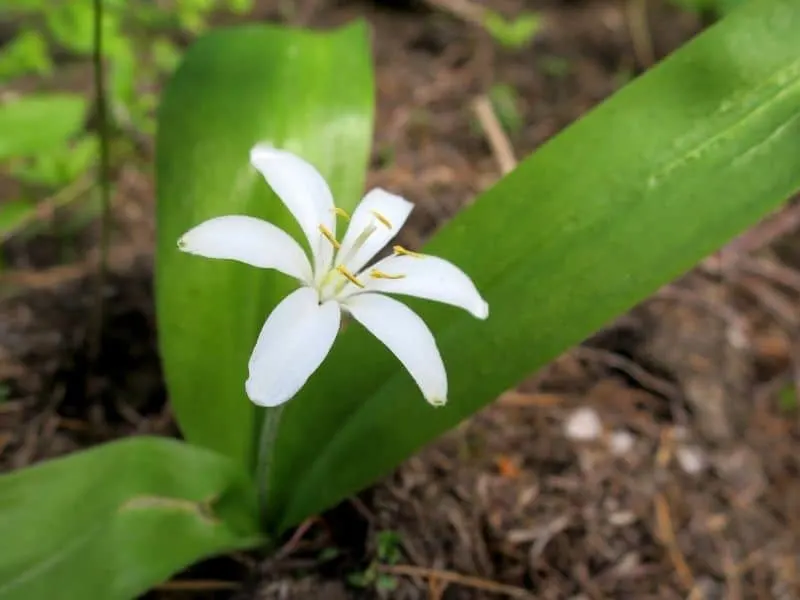
This member of the lily family has white, six-petaled flowers that bloom in the spring and summer above large, shiny, blade-shaped leaves. It typically grows just two feet tall. Native to the mountains of western North America, queen’s cup is an excellent addition to woodland gardens and other shady locations.
Queen’s cup thrives in rich, moist soils and partial to full shade.
6. Queen’s wreath (Petrea volubilis)
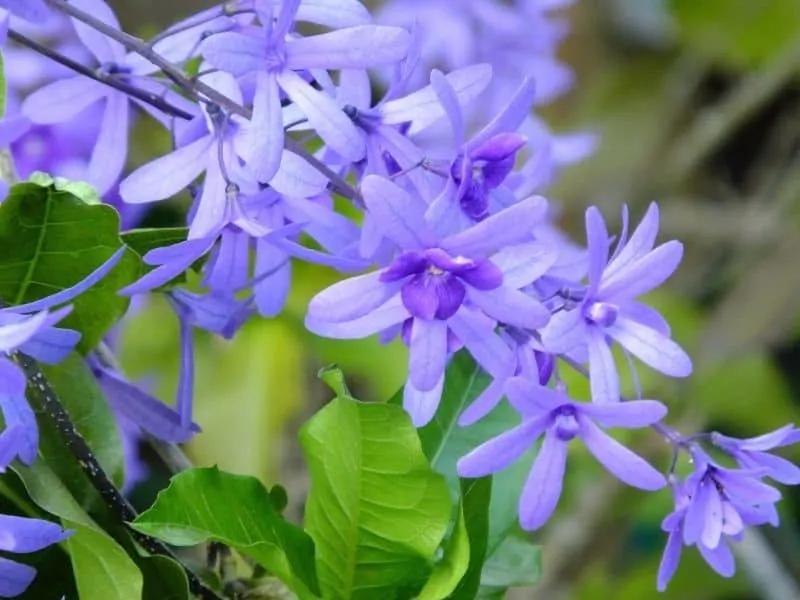
This tropical vine resembles wisteria with its drooping, purple clusters of star-shaped blossoms. A bit of pruning can keep this 40-foot vine to a more manageable size, or even shrubby or treelike.
Native to Mexico and Central America, queen’s wreath does not tolerate frost and thus can only be grown in zones 9-11. It does best in full sun and requires regular watering when first planted, though it will tolerate partial sun and, once established, drought.
7. Quesnelia (Quesnelia sp.)
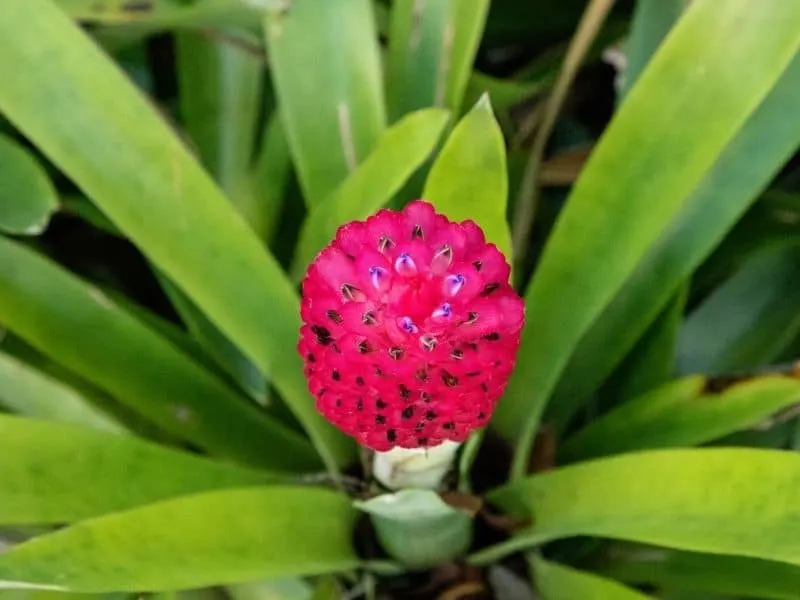
A hardy bromeliad native to Brazil, quesnelia produces a cone-shaped flower nestled among a rosette of stiff, blade-shaped leaves. The flowers bloom in winter or spring in shades of red, pink, yellow, or blue — and sometimes multiple colors — depending on the species. Both drought and cold-tolerant, quesnelia is remarkably easy to grow, but only in zones 9-12.
Quesnelia thrives in moist but well-drained soil and anywhere from full sun to full shade, so make sure to check the specific growing instructions for the variety you choose.
8. Quince (Chaenomeles sp.)
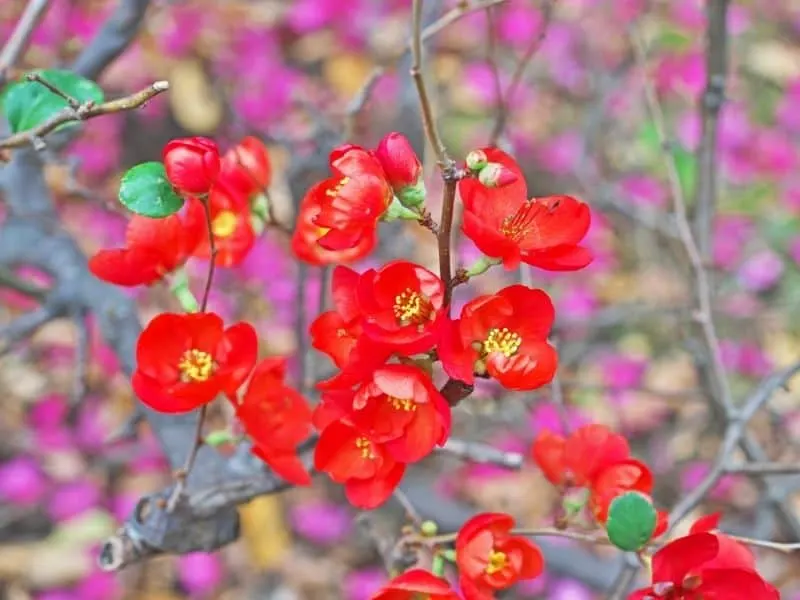
Flowering quince blooms in late winter or early spring with a stunning display of white, pink, or red flowers. Although mostly grown for its lovely flowers, this deciduous shrub also produces apple-like fruit that can be used in jams and jellies. Other types of quince include the traditional quince (Cydonia oblonga), commonly grown for its fruit, and Chinese quince (Pseudocydonia sinensis).
Nearly indestructible, flowering quince grows happily in any location with well-draining soil and full sun to light shade. Plant at least two in close proximity to ensure cross-pollination.
Ready to feel like the queen (or king) of your garden? Let’s get planting!
For even more regal inspiration, check out these kingly flowers that start with K.
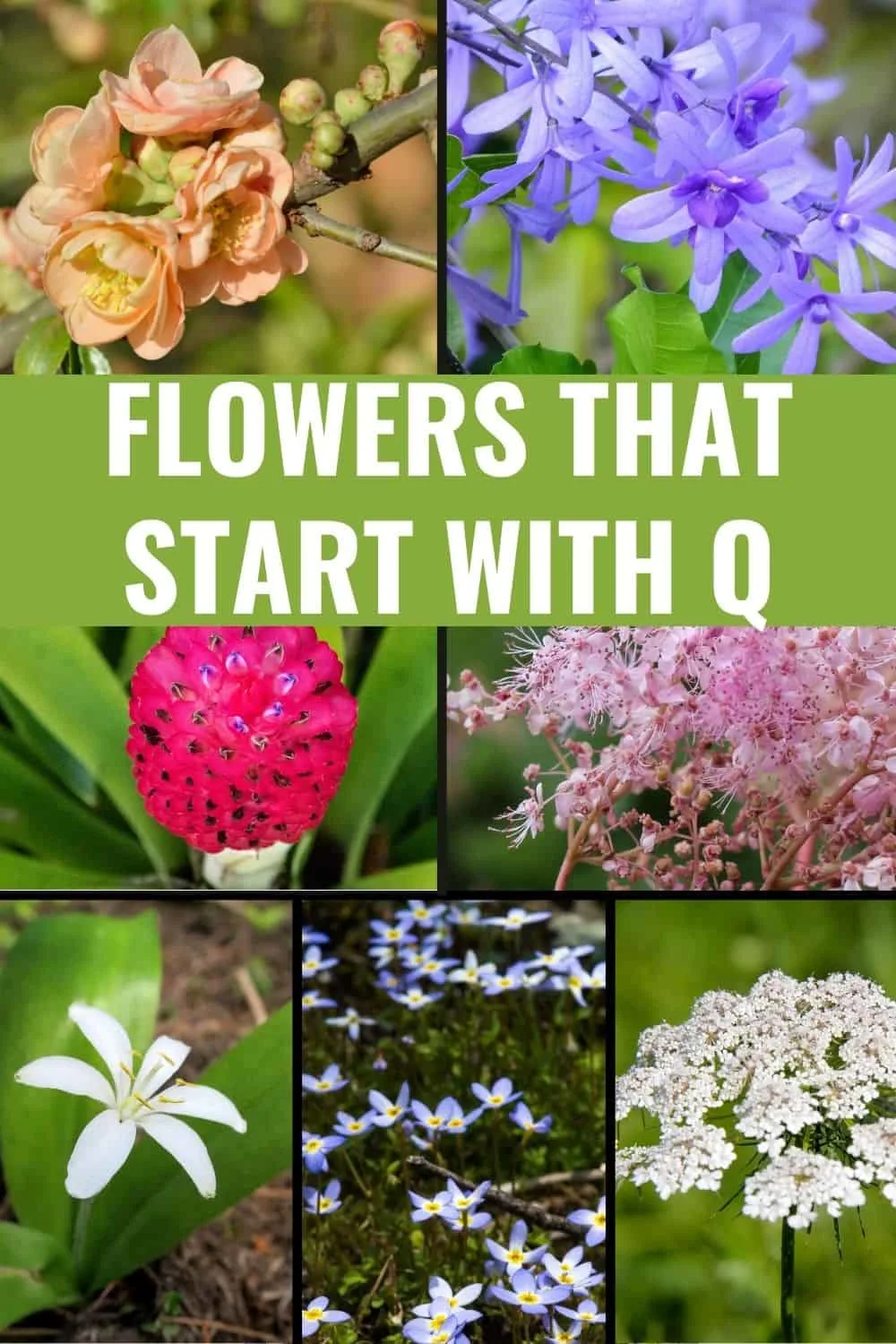


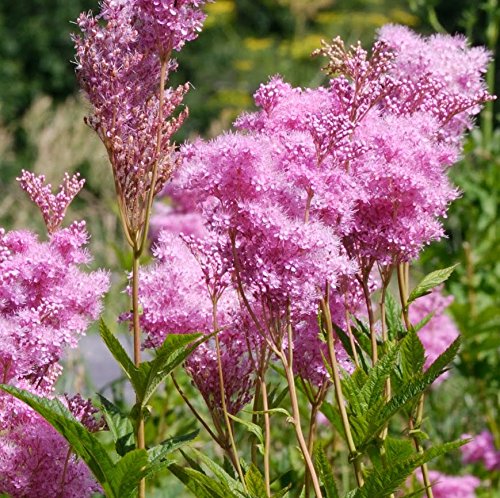
Beautiful Flower Garden Ideas
Saturday 6th of March 2021
[…] 8 Queenly Flowers That Start With Q […]
Beth Freeman
Friday 26th of February 2021
You didn't identify the beautiful peach-colored flowers that advertised this article. I clicked in particularly to see if I was right in my guess about it. Disappointed.
Adriana
Friday 26th of February 2021
They are quince flowers (they come in white, pink, peach, and red).